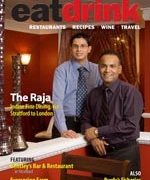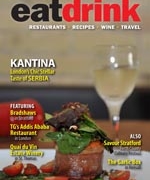Cheers to the Season
It’s nearing that time of year when we gather with family and friends to raise a glass to the holiday season. Many of us will be conducting those toasts with a beer in hand since Canadians believe that beer is our gift to the world. Nicholas Pashley could not agree more and he has given us a tribute to his favourite nectar in Cheers! An Intemperate History of Beer in Canada. Even with a rich history steeped in beer, Pashley urges us on as a country to drink more as our patriotic duty to rise higher than twentieth place on the world’s per capita beer drinking list, below countries like Poland and Luxembourg, but ahead of Iceland and Cyprus.
We may not drink the most as a nation, but beer is important to our country. There are those 170,000 full-time employees who work in the beer industry in Canada, and then there are the rest of us who happily support it by spending $9 billion a year. It is an industry known for its big names: John Labatt, Alexander Keith, Thomas Carling, John Sleeman. After the Hudson’s Bay Company, Molson Canada, started in 1786, is the second oldest company in the country. And the big names haven’t been without their controversy over the years – John Labatt was kidnapped for ransom in 1934. During American Prohibition, entrepreneurial bootleggers made a lot of money in Canada, especially in the Atlantic provinces where fishing boats became vessels for transporting illicit liquor to the United States. Even Al Capone set up shop in Moose Jaw to operate his bootlegging tunnels.
As Pashley writes: “It’s a globalized world we inhabit these days, and the beer drinker would be parochial indeed not to try the best brews of the world.” He does go well beyond our Canadian roots, describing the outsider (American, European, and Japanese) influences that have their stake in Canadian beer companies, for example Sleeman is owned by Sapporo of Japan and Labatt by InBev of Belgium. Whether talking about domestic or imported beer, the really good beers raise the bar for our taste barometer and help Canadian beers to be in a constant state of improvement. But he always comes back to a hearty proclamation of I AM CANADIAN, just like Joe says in those old Molson commercials. Not that Pashley is a fan of big names, often criticizing the blandness of the conglomerate products that have succeeded through advertising rather than taste.
He is, however, a stalwart advocate of craft beers that are exhibited at beer festivals and pubs across the country, most notably the big three festivals in Toronto, Montreal, and Victoria where he imbibes in all nature of beers, happily reporting back to his readers. Taste rules his quest for sampling the best beers, but he can’t help but bring up the most interesting as well, such as Polygamy Porter brewed by Wasatch Brewery in Utah (the slogan – “Why Have Just One?”), or the kosher Rejewvenator put out by the Jewish Shmaltz Brewing Company in New York or the green tea beer from the Great Lakes Brewery in Toronto.
Pashley’s witty writing is as enjoyable as his research is informative. Even though there may be an official formula to help explain the “beer goggle” syndrome, Pashley supports the research himself by writing: “I am living proof that women experience beer goggles. I got married, didn’t I? And my wife, thirty-odd years on, continues to drink, hoping to find me as attractive as she clearly did one night long ago in the Morrissey Tavern.” His humour continues in the segments about Prohibition when he offers advice to modern women by saying, “If a man in your life drinks too much, it may be because he’s afraid it’s going to be taken away from him. It’s happened before.”
His topics range from green beer on St. Patrick’s Day to green companies that operate local and sustainable businesses. The book ends with a cross-country pub crawl, hitting all the author’s favourite drinking holes from the Maritimes to British Columbia, becoming what he calls an “alco-tourist” and learning that Yukoners are statistically the heaviest Canadian drinkers of beer, followed by Newfoundlanders. In Winnipeg, he goes to King’s Head pub (nicknamed “The Pub I Would Spend Most of My Time in If I Lived in Winnipeg”) where he tries coffee-flavoured Half Pints Stir Stick Stout. He declares Montreal to be the best place to find interesting beer in Canada and Halifax has no shortage of pubs that serve the locally-brewed Garrison’s Imperial Pale Ale, named Beer of the Year in 2007 and 2008. Not a bad little drinking spree, all in the name of research.
Pashley presents an entertaining picture of a truly Canadian drink and he asks some existential questions along the way, such as, “What brand of beer would you drink if there were no commercials?” or “Would you drink beer if hockey didn’t exist?” His overall answer, of course, is a resounding “Yes!” because in the words of the author: “Beer can make you feel so good about yourself that you begin to feel immortal.”






